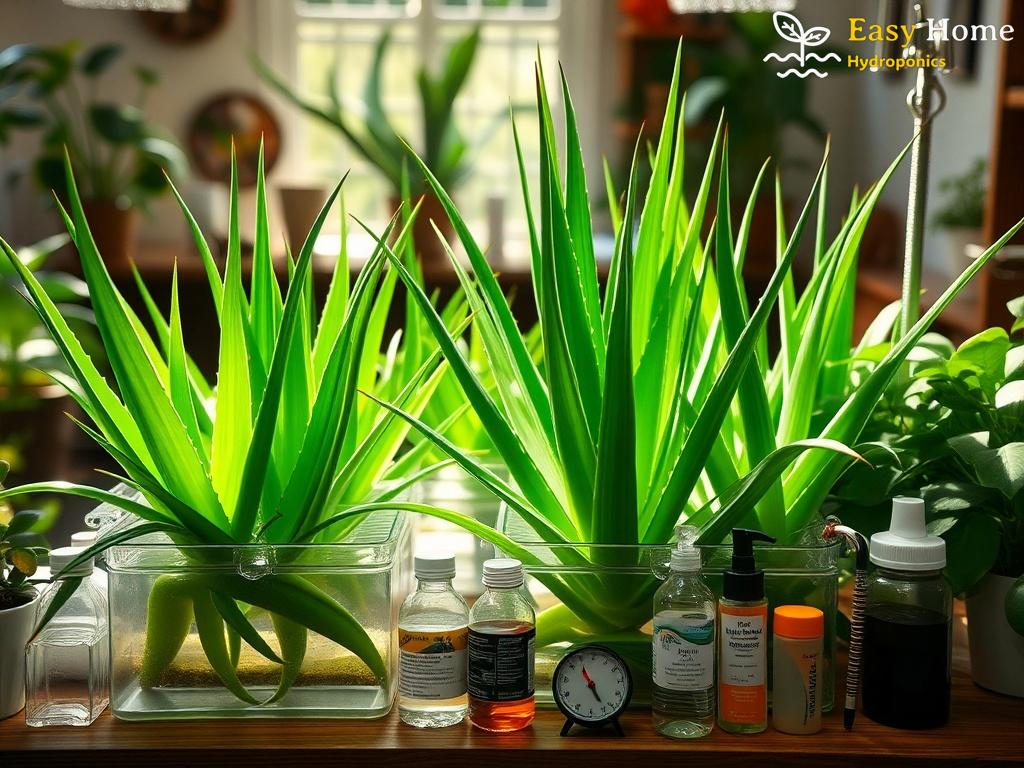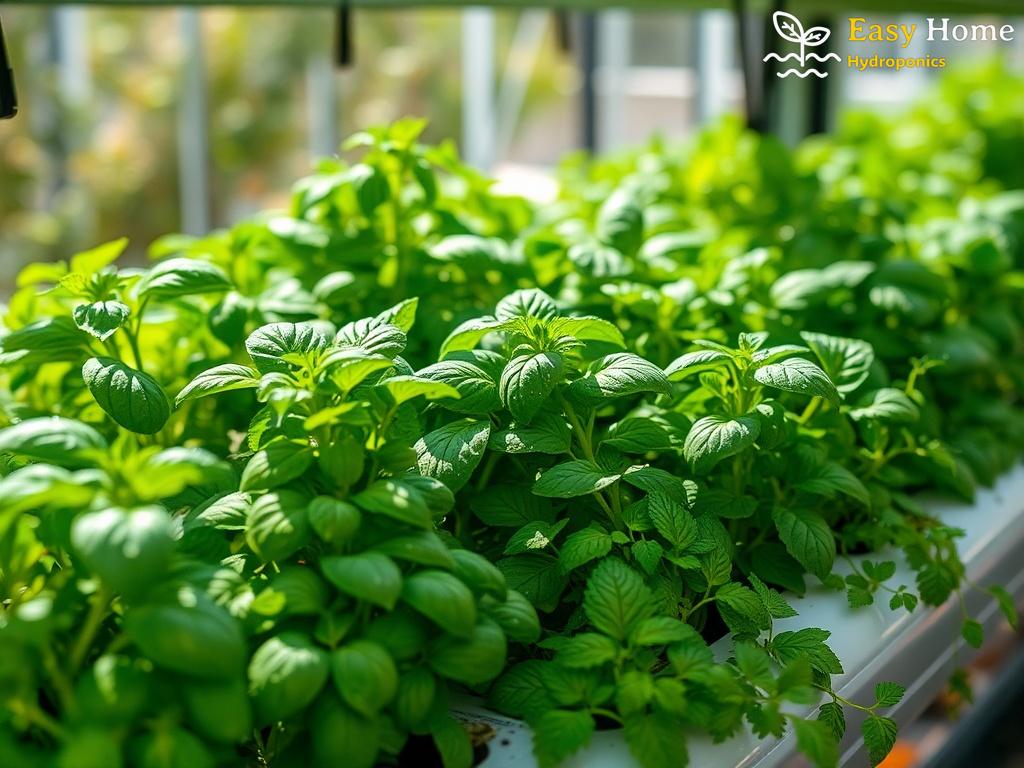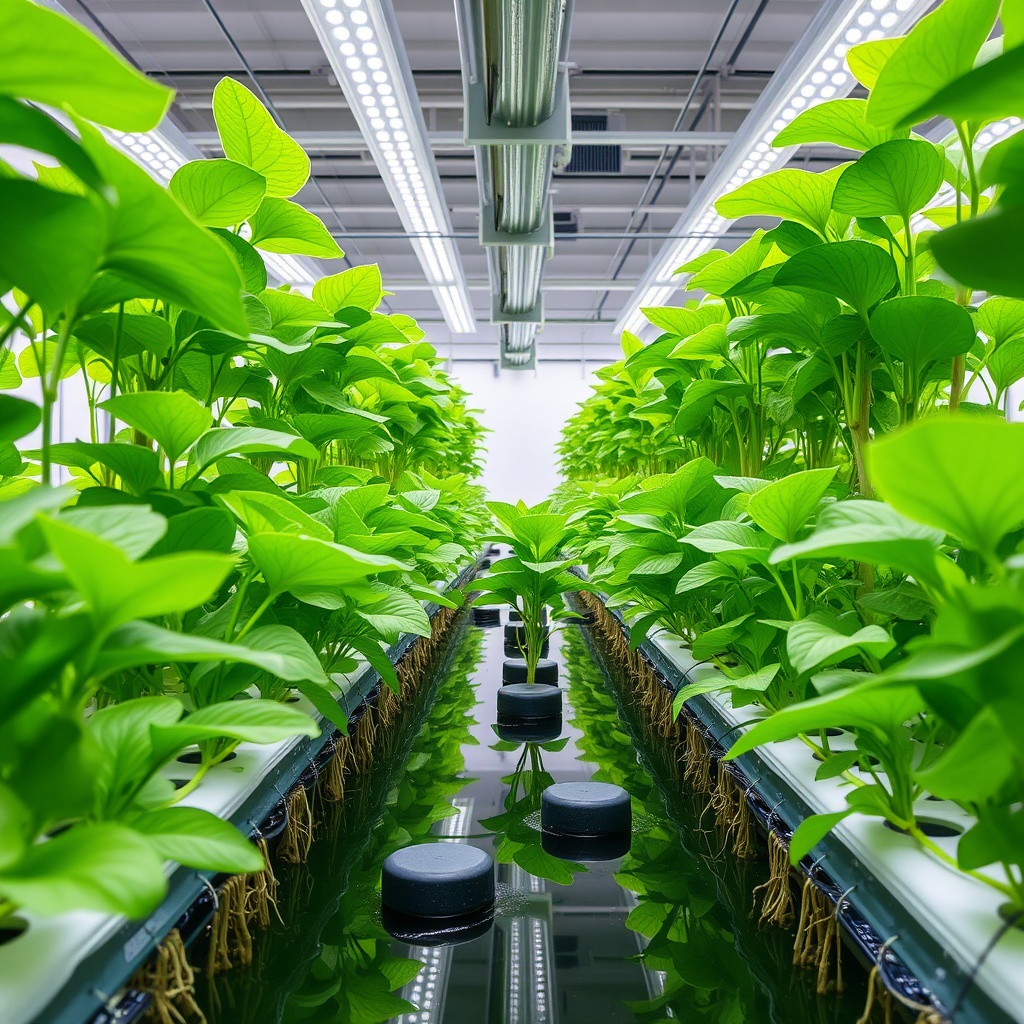The Hydroponic Advantage: Why Aloe Vera Thrives in Water
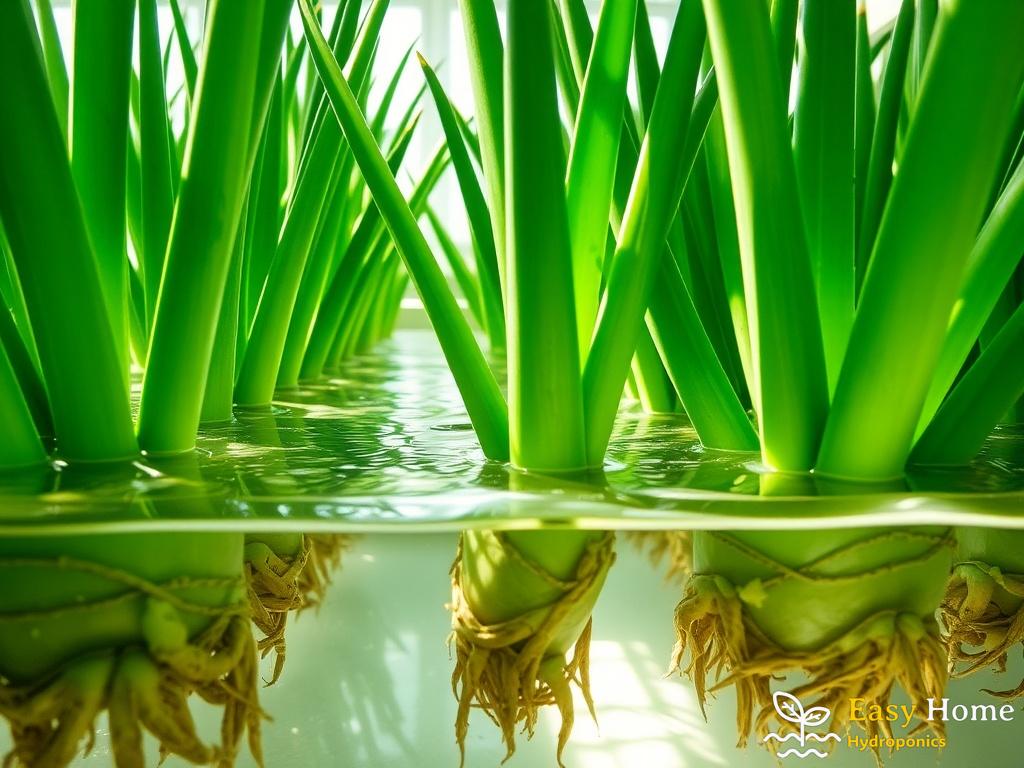
Aloe Vera, renowned for its myriad health benefits, emerges as a favorite among home remedy enthusiasts. But did you know that this succulent can flourish even without soil? Hydroponic cultivation offers unique advantages that enhance the growth and potency of Aloe Vera. In this article, we explore why Aloe Vera thrives in water and how you can harness this method for your own home remedies.
Hydroponics is a method of growing plants in a nutrient-rich water solution, eliminating the need for soil. This innovative technique provides several benefits that make Aloe Vera particularly well-suited to this environment. Here are some reasons why Aloe Vera thrives in hydroponic systems:
- Optimal Nutrient Delivery: In hydroponics, nutrients are delivered directly to the roots, allowing for faster absorption and more efficient growth.
- Reduced Risk of Pests and Diseases: Growing Aloe Vera in water minimizes the chances of soil-borne pests and diseases, promoting healthier plants.
- Controlled Environment: Hydroponic systems allow for precise control over pH levels, temperature, and moisture, creating the ideal conditions for Aloe Vera to flourish.
- Space Efficiency: Hydroponic setups can be designed to maximize space, making it easier to cultivate Aloe Vera in small areas.
When it comes to hydroponic systems, there are several options available, each with its unique benefits. Selecting the right system will ensure your Aloe Vera thrives. Below is a comparison of popular hydroponic setups:
| System Type | Description | Ideal for Aloe Vera |
|---|---|---|
| Deep Water Culture | Plants are suspended in a nutrient solution, with roots submerged in water. | Excellent for rapid growth and easy access to roots. |
| Wick System | Nutrients are drawn to the plant roots through a wick. | Simple and low maintenance, but growth may be slower. |
| Nutrient Film Technique | A thin film of nutrient solution flows over the roots, providing constant moisture. | Promotes strong root development and high oxygen levels. |
By understanding these systems, you can choose one that matches your needs and ensures your Aloe Vera reaches its full potential.
Essential Nutrients for Lush Aloe Vera Growth
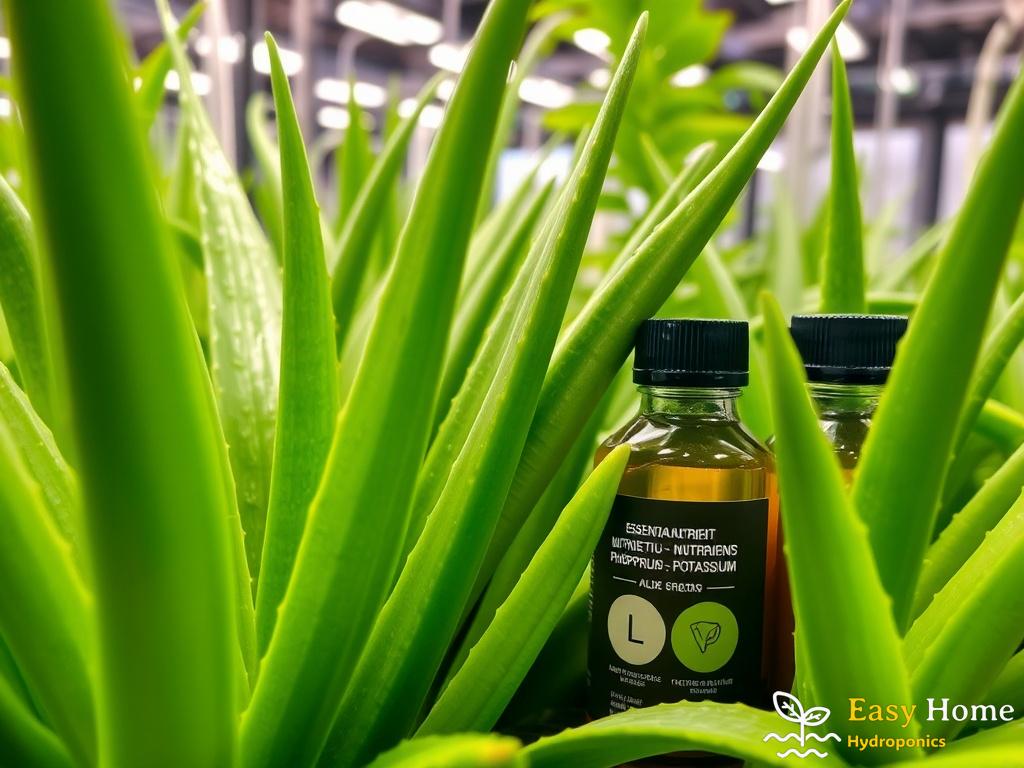
To cultivate Aloe Vera successfully in a hydroponic setting, understanding its nutritional needs is paramount. These succulent plants require a unique blend of essential nutrients to thrive and produce the potent gel that is so revered in natural remedies. When grown without soil, the challenge becomes ensuring that these nutrients are readily available in the water solution, promoting optimal growth and health.
Macronutrients are the building blocks of plant health, and Aloe Vera is no exception. Primary among these are nitrogen, phosphorus, and potassium. Nitrogen is crucial for the development of lush foliage, while phosphorus supports strong root systems and flowering. Potassium, on the other hand, plays a vital role in overall plant health, helping to regulate water usage and promoting resistance to stress. In hydroponic systems, these nutrients must be supplied in a balanced manner to avoid deficiencies that could impede growth.
Equally important are micronutrients, which include elements like iron, manganese, zinc, and copper. Although these nutrients are required in smaller quantities, their role in enzymatic processes and metabolic functions cannot be overstated. For instance, iron is essential for chlorophyll production, which is necessary for photosynthesis, while zinc plays a part in regulating growth hormones. Ensuring that your hydroponic solution contains adequate levels of these micronutrients is crucial for achieving a vibrant and healthy Aloe Vera plant.
Moreover, the pH level of your nutrient solution can significantly impact nutrient availability. Aloe Vera prefers a slightly acidic to neutral pH, typically around 6.0 to 7.0. Regular monitoring and adjustments can help maintain this range, ensuring that the plant can absorb nutrients efficiently. A stable pH level not only aids in nutrient uptake but also minimizes the risk of nutrient lockout, where essential elements become unavailable to the plant.
Finally, it’s worth noting that the quality of water used in hydroponics can influence nutrient solubility and overall plant health. Using filtered or distilled water can prevent the introduction of harmful chemicals, allowing your Aloe Vera to flourish. By meticulously managing these aspects of nutrient delivery, you can create a robust hydroponic environment that supports lush growth and maximizes the therapeutic benefits of your Aloe Vera.
Setting Up Your Hydroponic System: A Step-by-Step Guide
Creating a hydroponic system for your Aloe Vera is not just about assembling equipment; it’s about designing a thriving ecosystem that fosters growth and maximizes the therapeutic properties of this remarkable plant. As you embark on this exciting journey, understanding the essential components of a successful hydroponic setup will empower you to cultivate Aloe Vera that is lush, vibrant, and ready to serve your home remedy needs.
To begin, selecting the right location is vital. Your hydroponic system should be placed in an area that receives ample indirect sunlight, ideally around 6-8 hours a day. Natural light can significantly enhance the growth of Aloe Vera, so consider a south-facing window or a well-lit space. Once you’ve established the perfect location, it’s time to choose your hydroponic system. The Deep Water Culture (DWC) system is particularly popular for Aloe Vera, as it allows roots to remain submerged in a nutrient-rich solution, promoting rapid growth. The next step involves assembling your chosen system, which typically includes a reservoir for the nutrient solution, net pots for the plants, and an air pump to oxygenate the water.
After setting up the framework, it’s crucial to prepare the nutrient solution. This involves dissolving high-quality hydroponic nutrients in water and adjusting the pH level to between 6.0 and 7.0. Keeping the pH in this range ensures that your Aloe Vera can effectively absorb essential nutrients. Remember to monitor the nutrient concentration regularly, as Aloe Vera can be sensitive to over-fertilization.
Once your system is operational, it’s essential to maintain a stable environment for your Aloe Vera. Regularly check the water temperature, ideally keeping it between 65°F to 75°F, as this range promotes optimal nutrient uptake. Additionally, consider implementing a routine for changing the nutrient solution every two to three weeks to prevent imbalances and ensure your plants receive fresh nutrients. Another key factor in the health of your Aloe Vera is humidity. While these plants are quite adaptable, maintaining a humidity level of around 40-60% can help them thrive. If your environment is too dry, misting the leaves or using a humidifier can provide relief.
Lastly, always keep an eye on your plants for signs of stress or nutrient deficiencies. The beauty of hydroponics is its adaptability; you can easily adjust nutrient levels or environmental conditions to meet the evolving needs of your Aloe Vera. By carefully setting up and managing your hydroponic system, you can unlock the full potential of Aloe Vera, ensuring that it flourishes while providing you with the health benefits you seek.
Harvesting Aloe Vera: Techniques for Maximum Gel Extraction
Successfully harvesting Aloe Vera is an art that requires not only skill but also a keen sense of timing. Understanding when to pick your succulent can significantly influence the quality and quantity of the precious gel it yields. Generally, the best time to harvest is when the leaves are mature, which typically occurs when they are at least 8 to 12 inches long. At this stage, the leaves are packed with the nutrient-rich gel that is sought after for its remarkable health benefits. Ideally, choose to harvest in the morning after the dew has dried, as this is when the plant is most hydrated and the gel is at its peak potency.
When it comes to Aloe Vera, not all leaves are created equal. Selecting the right leaves during the harvesting process can maximize gel extraction and ensure the plant’s longevity. Focus on the outermost, oldest leaves, as they contain the highest concentration of gel. These leaves are typically thicker and have a more robust structure, making them easier to cut and process. Always use a clean, sharp knife or garden shears to avoid damaging the plant or introducing contaminants.
Once you’ve chosen the perfect leaves, the extraction process can begin. Begin by cutting the leaf close to the base of the plant, ensuring you do not harm surrounding leaves. After harvesting, place the leaves upright in a bowl for about 30 minutes; this allows the yellow sap, known as aloin, to drain out. Aloin can be irritating to the skin and should be avoided if you plan to use the gel topically. Once drained, you can proceed to extract the gel. Use a sharp knife to slice the leaf lengthwise and gently scoop out the translucent gel with a spoon. This gel is not only versatile but can also be stored in airtight containers for future use.
Understanding these techniques will empower you to harvest Aloe Vera effectively and safely, ensuring that you get the most out of your hydroponically grown plants. By mastering the art of harvesting, you can enjoy the full range of benefits that Aloe Vera has to offer, from soothing skin ailments to enhancing your home remedies.
DIY Home Remedies: Unlocking Aloe Vera’s Healing Powers
Aloe Vera is not just a gorgeous green addition to your home; it’s a powerhouse of healing properties waiting to be unlocked. With its rich history in natural remedies, Aloe Vera has become an essential ingredient in DIY home treatments. Whether you’re looking to soothe skin irritations, enhance your beauty routine, or promote overall wellness, harnessing the gel from your hydroponically grown Aloe Vera can be a game changer. Let’s dive into some fantastic ways to utilize this succulent in your home remedies.
Understanding how to use Aloe Vera effectively can elevate your approach to natural healing. Here are some marvelous ways to incorporate Aloe Vera gel into your daily life:
- Skin Soothing Gel: Straight from the leaf, Aloe Vera gel can be applied topically to alleviate sunburn, cuts, or minor burns. Its natural cooling properties provide immediate relief and promote faster healing.
- Moisturizing Face Mask: Combine Aloe Vera gel with honey and a splash of lemon juice for a hydrating face mask. This trio not only nourishes your skin but also helps brighten your complexion.
- Digestive Aid: A small amount of Aloe Vera juice can be consumed to promote digestive health. Its anti-inflammatory properties work wonders on the gut, easing symptoms of irritation.
- Hair Conditioner: For those looking to enhance their hair health, mix Aloe Vera gel with coconut oil and massage it into your scalp. This natural remedy can help reduce dandruff and promote shine.
Once you’ve harvested your Aloe Vera, creativity is your only limit when it comes to crafting home remedies. Infusions can take your Aloe Vera’s healing powers to the next level. Here’s how you can create some remarkable infusions:
1. Aloe Vera and Cucumber Cooling Gel: Blend Aloe Vera gel with fresh cucumber juice. This infusion is perfect for a refreshing facial treatment, especially after sun exposure.
2. Aloe Vera Herbal Tea: Steep dried herbs like chamomile or peppermint in boiling water, then add a spoonful of Aloe Vera juice for added health benefits. This soothing drink can support digestion and relaxation.
While Aloe Vera is generally safe for topical and internal use, it’s essential to exercise caution. Always perform a patch test before applying it to your skin to ensure no allergic reactions occur. When it comes to storage, keep the extracted gel in an airtight container in the refrigerator for up to a week. For longer preservation, consider freezing the gel in ice cube trays, making it easy to access whenever needed.
By mastering these DIY home remedies, you can unlock the full potential of your hydroponic Aloe Vera, turning your home into a sanctuary of natural healing. Embrace the journey of self-care and wellness with the versatile power of this extraordinary plant.

